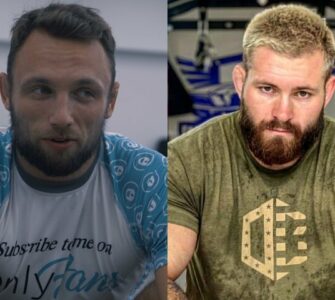Unpredictability creates an endless possibility of options in combat sports. By taking advantage of not just explosive strength but rather unpredictability, a far better-skilled opponent can be neutralized by somebody less skilled. In BJJ, the time it takes to receive a black belt is around ten years.
During that time, the black belt will have spent thousands of hours on the mat preparing him to impose his own game and to counter his opponent’s every move. On the other hand, white belts lack all of the above and are most often just trying to grasp what the heck is going on, only to be subjected to a variation of breath-stealing submissions. While the white belt path can be a long and challenging experience for many, the occasional white belt will actually dive so deep into a technique that he manages to catch a black belt by surprise.
Sounds too good to be true, right? However, just like in the story of David vs. Goliath, every black belt has a weak spot. This is logical since there is no way that any black belt can possess knowledge of everything in Jiu-Jitsu. On the contrary, most black belts are very proficient in certain areas and less skilled in others. So if you are a white belt with the intention of tapping a black belt, your best tactical possibility of how to tap a black is to be as unpredictable as possible. In short, you have to lure the black belt into an area where he is not familiar, as suggested by the words of the great Chinese military leader Sun Tzu who said: “In conflict, confrontation will lead to engagement, and surprise will lead to victory.”
In this video, Brazilian Jiu-Jitsu Master Pedro Sauer shows a couple really effective triangle escapes and then shows a great ‘invisible detail’ about how to counter a common defense to the triangle that is often done by experienced black belts.
Pedro Sauer explains his philosophy when it comes to defeating opponents that possess a higher skills set than you. For him, in Jiu-Jitsu you need to cover all the defenses, escapes and counters of your opponents. You need to put yourself in the opponent’s shoes.
Great advise from a coral belt under Rickson Gracie.
Pedro Sauer was born and raised in Rio de Janeiro, Brazil, where from an early age, he began training in the martial arts. At age five, he began boxing and later took up judo and taekwondo. At age 15, however, his friend Rickson Gracie, invited him to train jiu-jitsu with his younger brother, Royler, who at the time was only nine years old. The outcome of this experience convinced him that jiu-jitsu was the most effective of all the martial arts, and he began training the very next day.

His training under both Helio and Rickson took place during a time when jiu jitsu was making its crucial transition as an obscure Brazilian art to a worldwide martial arts phenomenon. Pedro worked towards a double major (Economics and Business Administration) in college, and took post graduation courses at Fundacao Getulio Vargas. He worked in Brazil as a stockbroker for eleven years before deciding to move to the United States and pursue a career teaching jiu-jitsu.
With Rorion Gracie leading the exodus in 1990, Pedro was part of the first generation of Brazilian Jiu-Jitsu instructors and fighters that moved to the United States to reveal the art of BJJ to the world. He lived in California with Rickson Gracie and trained daily with the Gracie brothers (Rickson, Rorion, and Royce), their father, Helio Gracie, their cousin, Renzo Gracie and the Machado Brothers, as well as many others. In December of that same year, he moved to Utah where he began pioneering Gracie jiu-jitsu in the American southwest and eventually started the Pedro Sauer Brazilian Jiu-Jitsu Association, which is now one of the largest and most respected Gracie Jiu-Jitsu Associations in the world today with well over 100 academies under his guidance.
In 2006 Master Sauer relocated to Northern Virginia to set up the world headquarters for the PSBJJA in Herndon, Virginia.

















